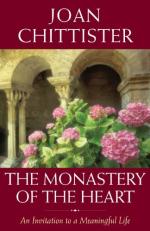|
This section contains 3,412 words (approx. 12 pages at 300 words per page) |

|
The earliest monasteries aimed to be selfsufficient; early monastic orders grew their own food and made simple clothing and other things they needed, in keeping with their vow to live "in poverty." Yet, monasteries did receive material goods from men who entered the monastery and from other sources. Adult novices were required to give up their property when they entered the monastery. The Rule of Benedict states, "If he has any possessions, let him give them beforehand to the poor, or, making a solemn donation, let him bestow them on the monastery."
In addition, monasteries acquired money, estates, and other assets from gifts, donations, rents, tithes, school tuition, literary projects, and commercial enterprises. Wealthy families who delivered a son to the monastery as an oblate often donated money and other goods for the monastery's use, such as livestock, fine religious...
|
This section contains 3,412 words (approx. 12 pages at 300 words per page) |

|




